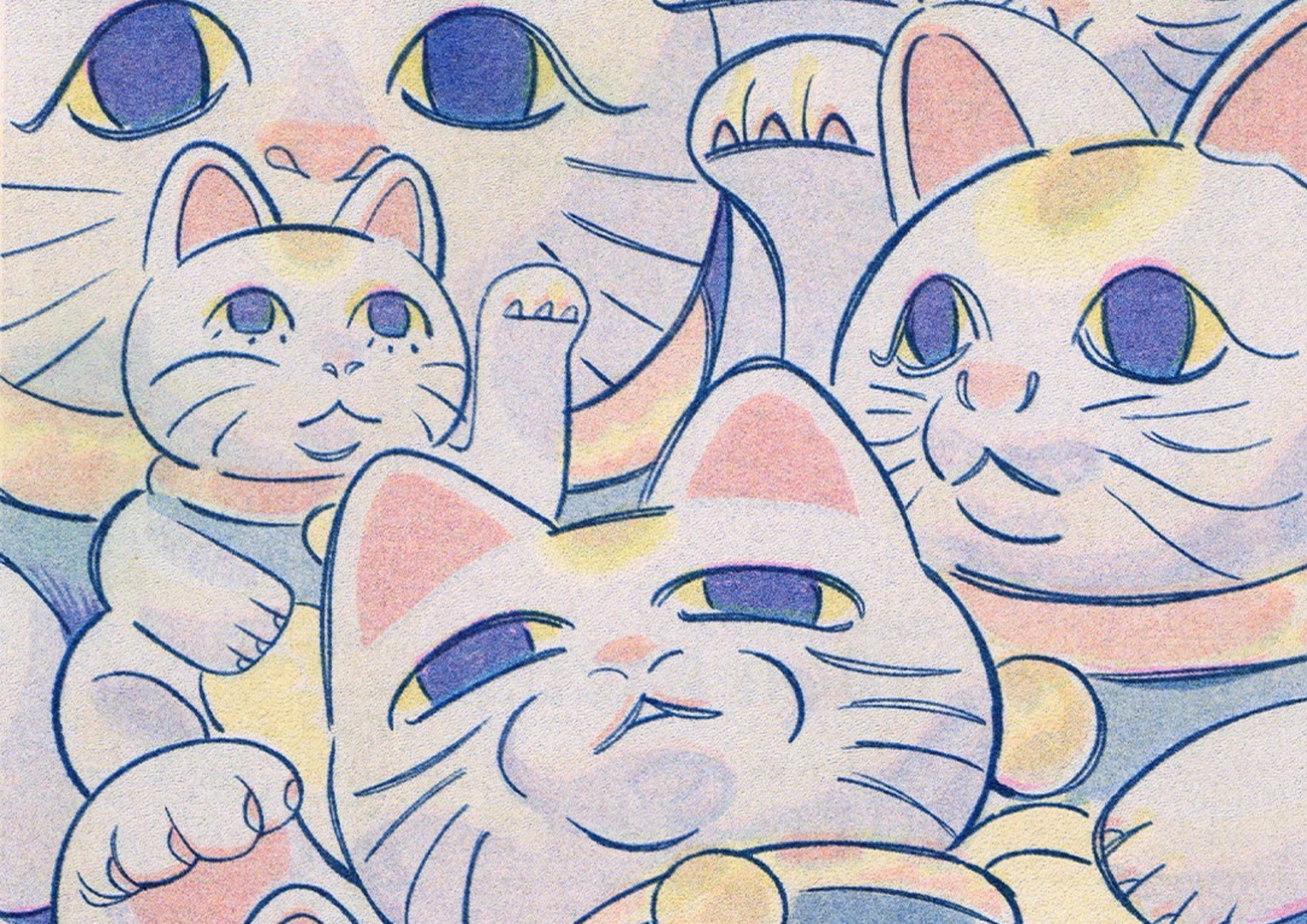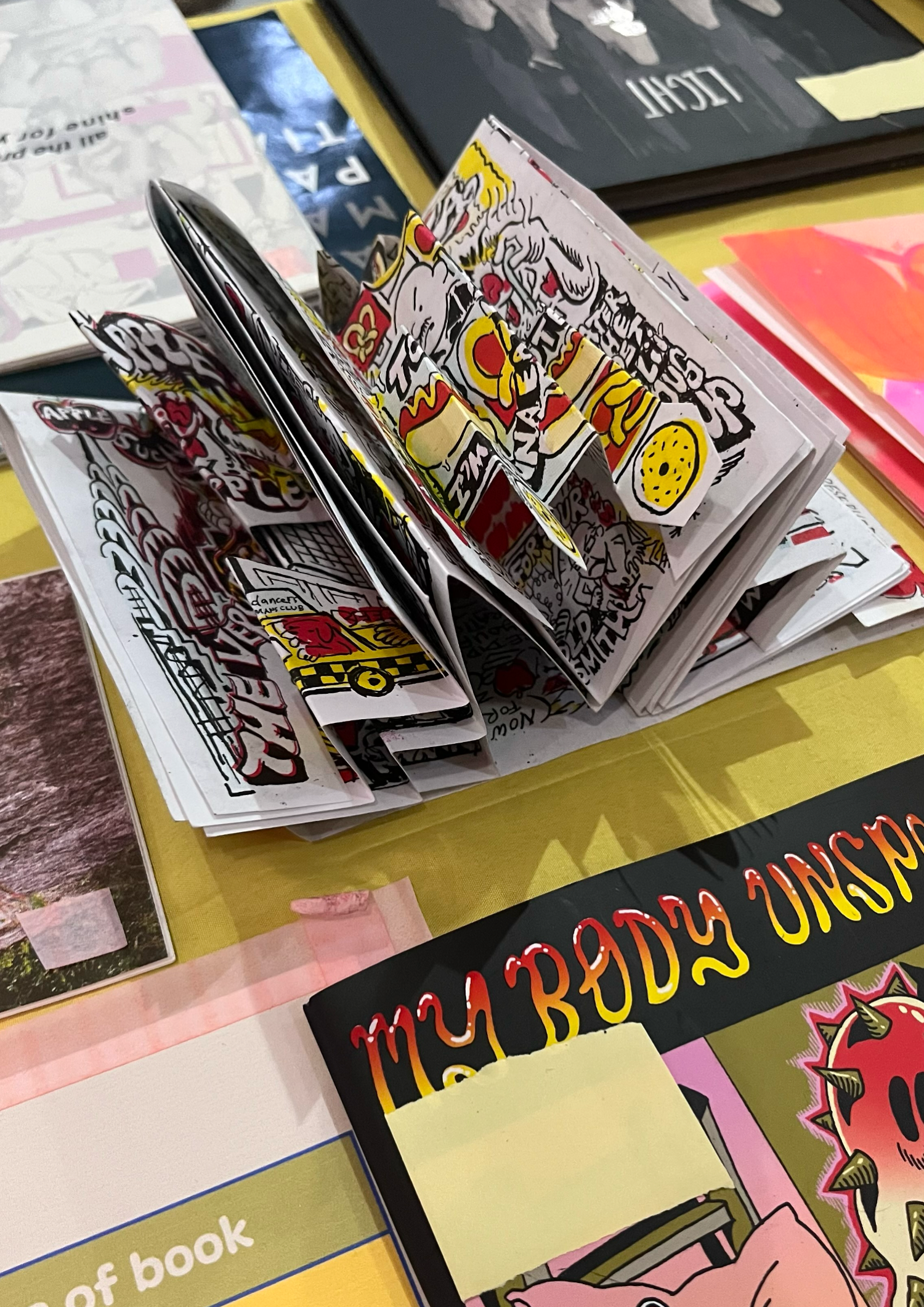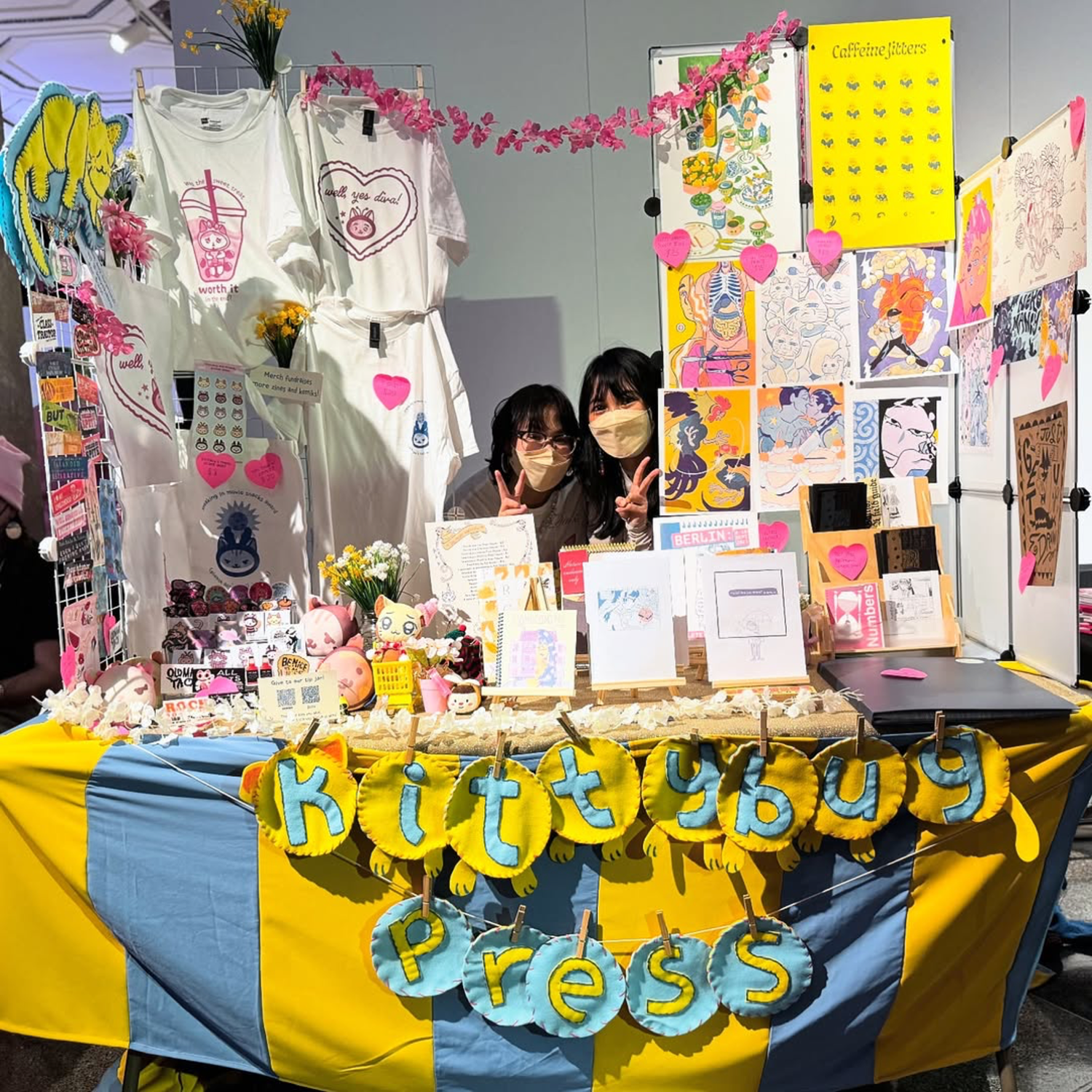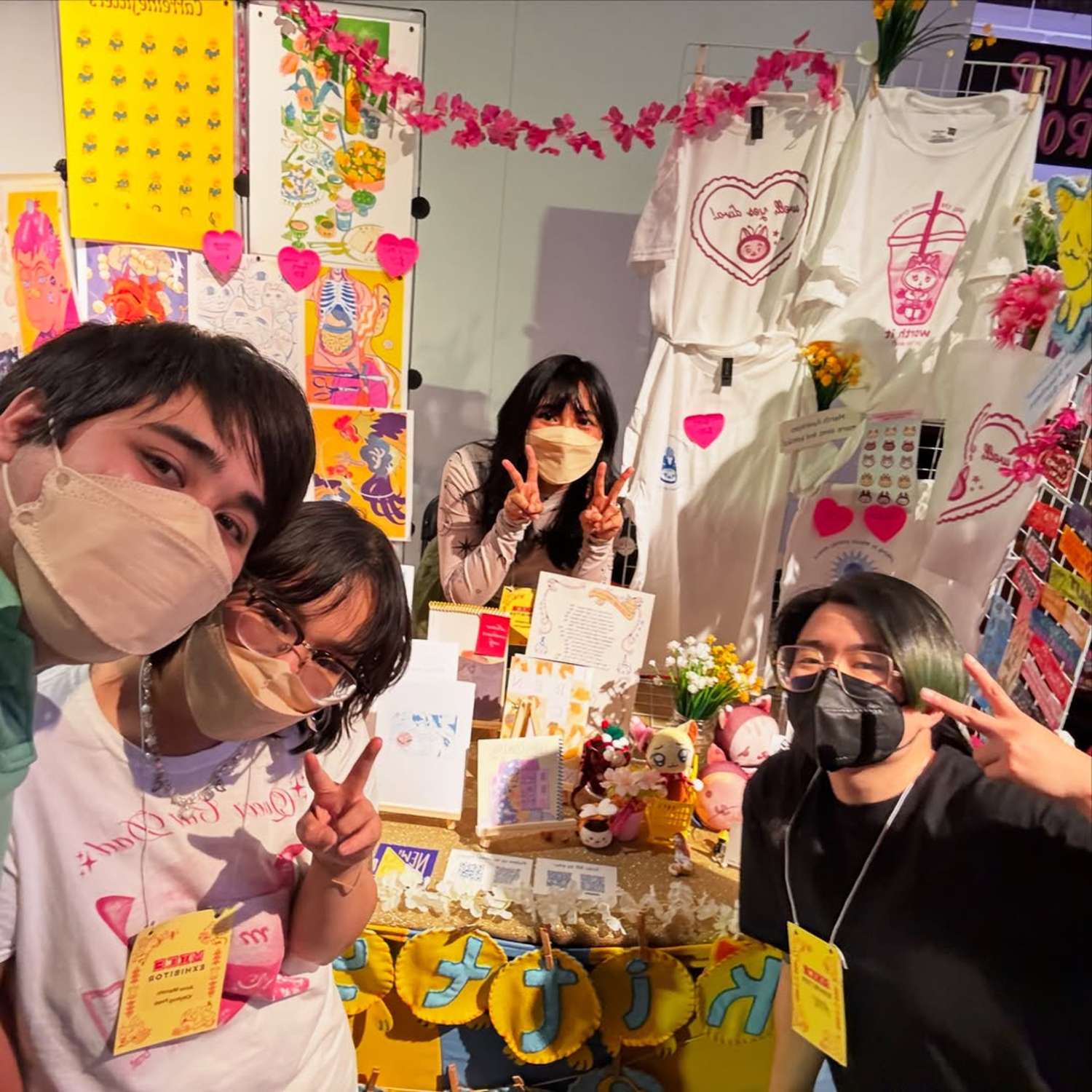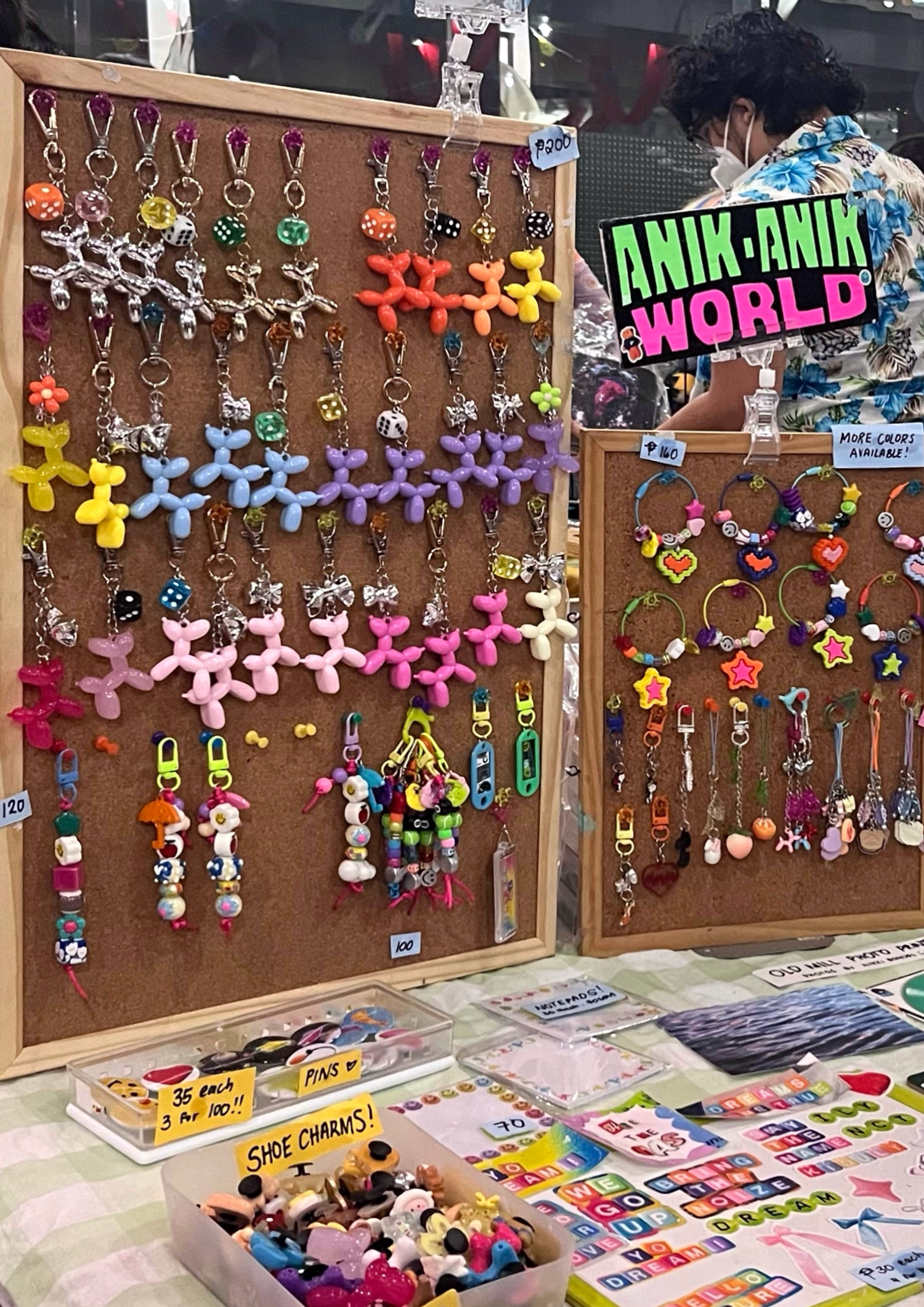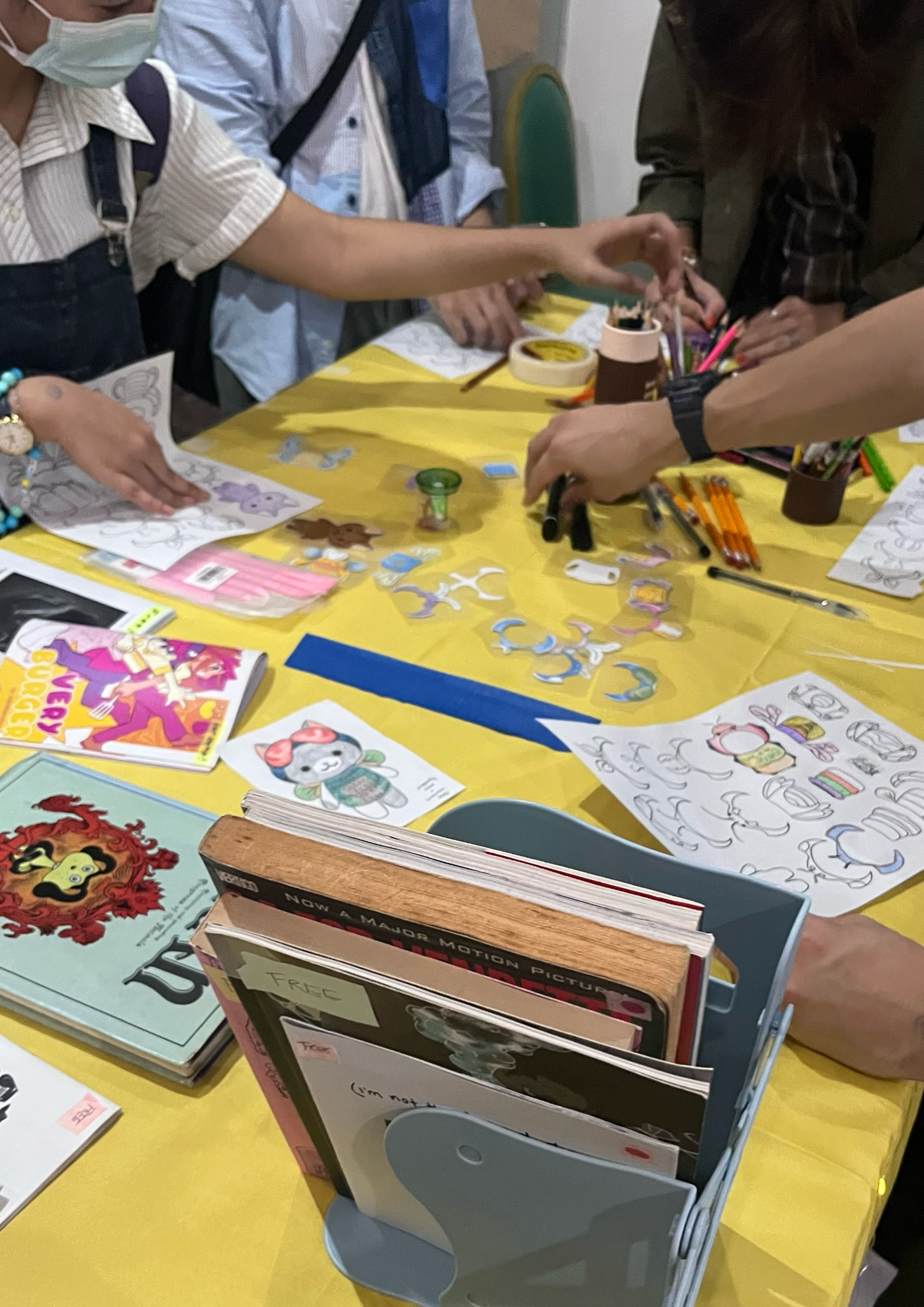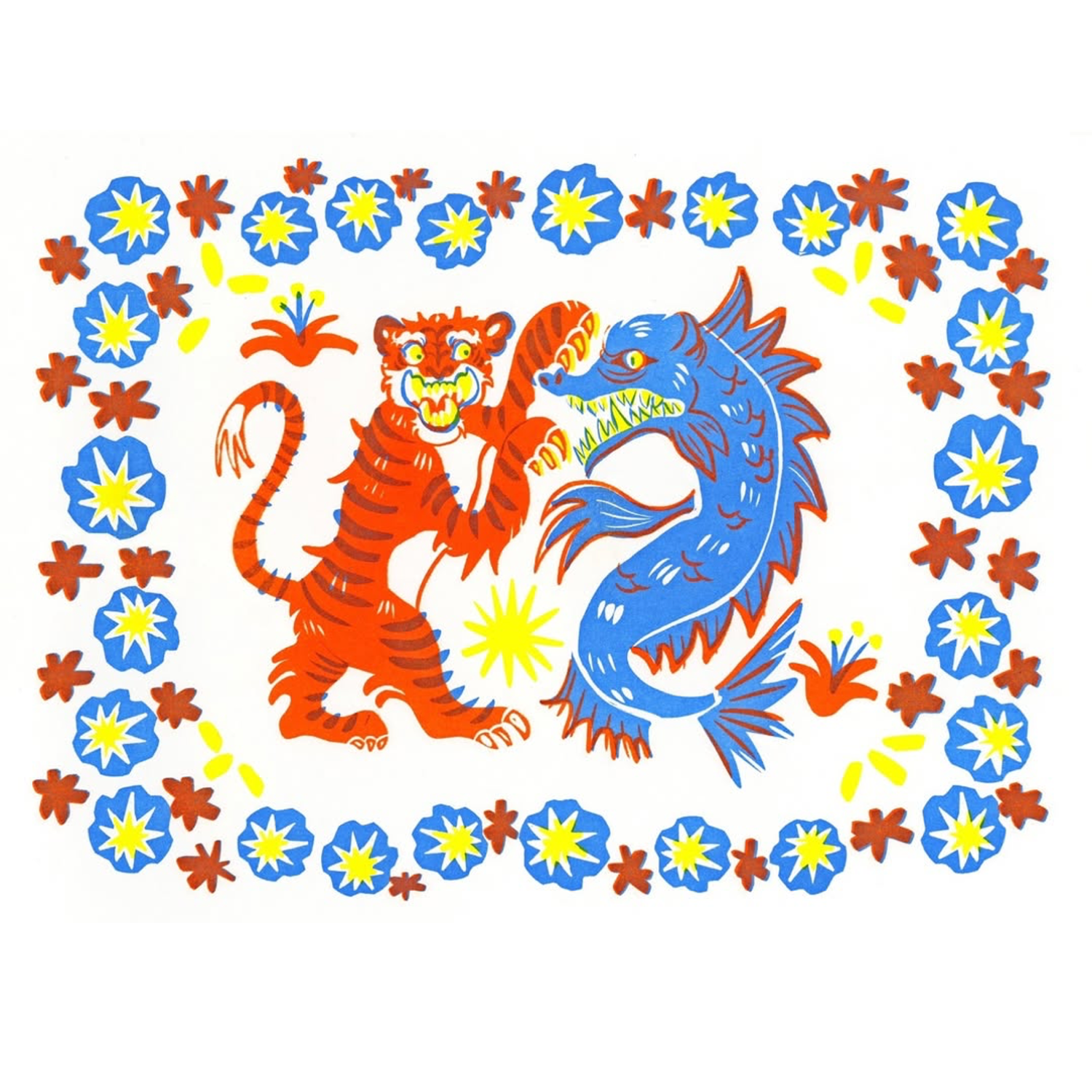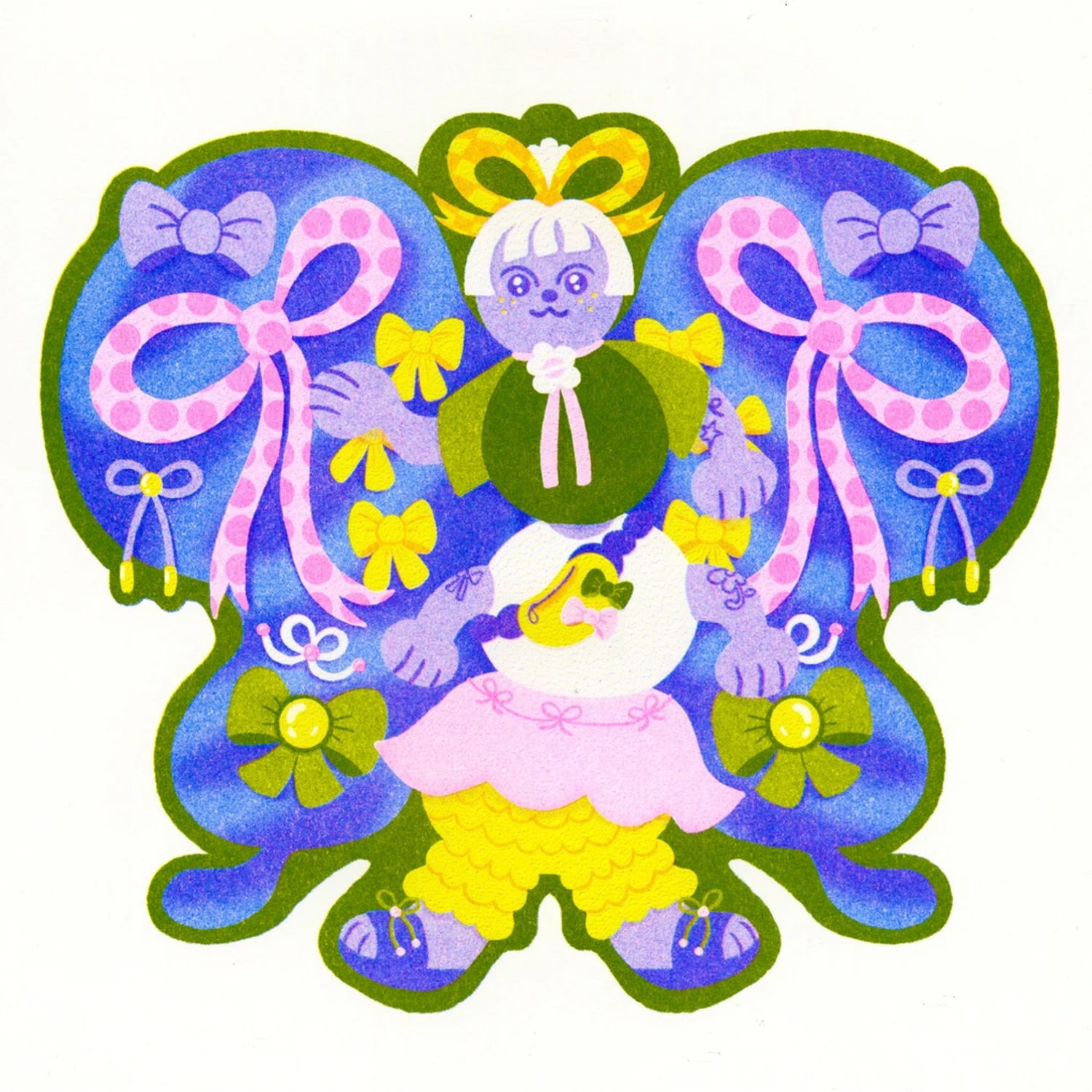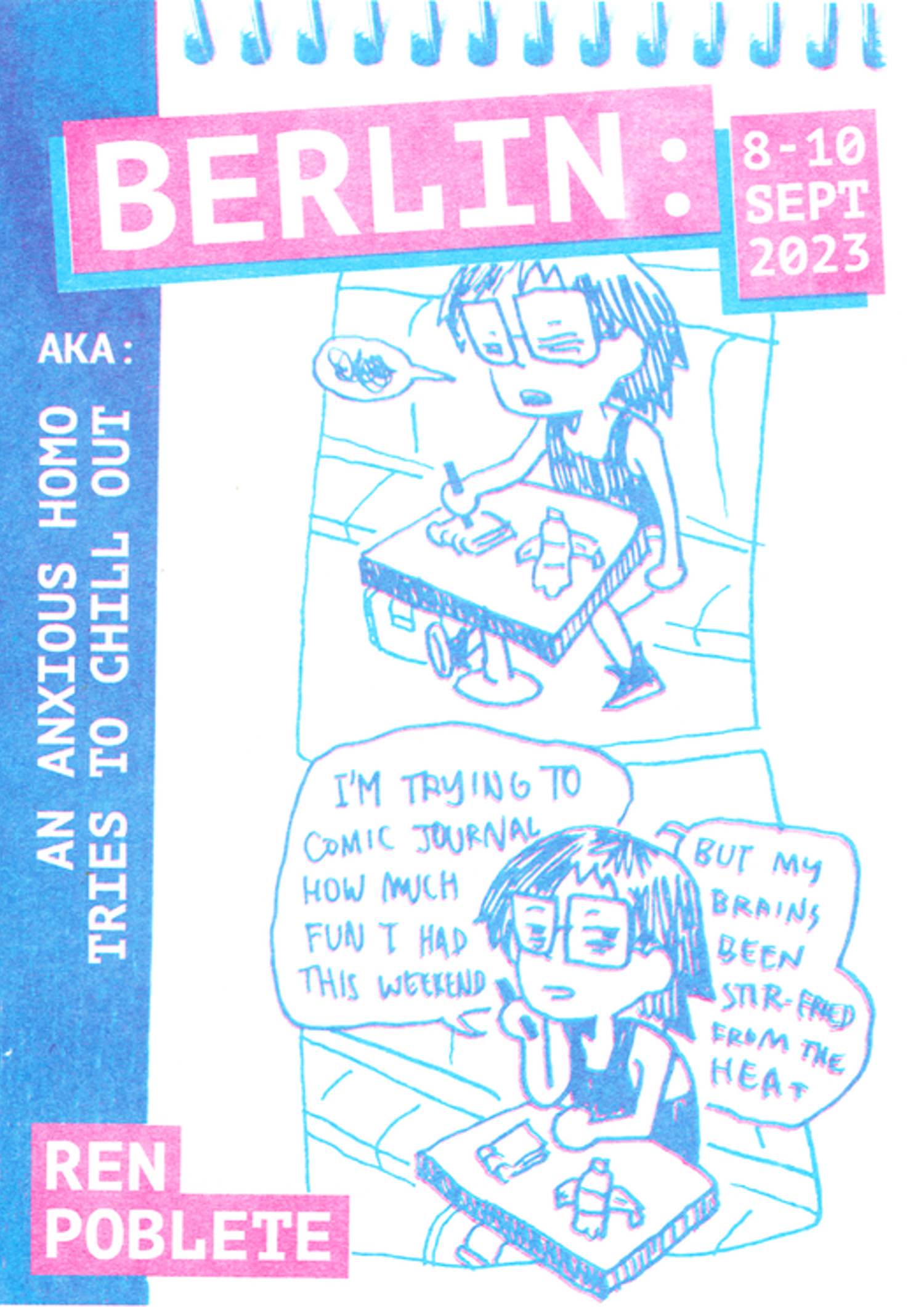Interview Gabrielle de la Cruz
Images Kittybug Press and featured artists
“Navigating the creative industry as a Filipino artist is difficult enough, and it’s even more of an uphill climb for female and LGBTQIA+ creatives,” opens New York and Manila-based independent micropress Kittybug, an initiative designed to collaborate with Filipino female and queer creatives in realizing their passion projects. Founded by Anna Marcelo in 2024 and co-headed by Rice Gallardo, the platform focuses on archiving and amplifying creative work, offering educational resources on independent publishing, and providing access to distinct processes such as zine making and risograph printing.
Earlier this year, Kanto had the pleasure of attending Kittybug and Friends, the micro press’ first in-person gathering in the Philippines. The pop-up and art market buzzed with creative energy, featuring over 20 artist booths, a vibrant zine library, and unintimidating risograph workshops. We sat down with Marcelo and Gallardo after the fair to dive deep into Kittybug’s mission, reflections and reception regarding the event, and their hopes for the Filipino female and queer community moving forward.
Our conversation follows:
Left: Booth of Miggie Bacungan at Kittybug and Friends; Right: Snap from the event’s zine library. Header: Risograph print, art by Digii Daguna
Hi Anna and Rice! Kittybug started as “an exercise to imagine how to facilitate connection and collaboration and take away the barrier most people have in starting their passion projects.” Can you tell us what sparked this idea and how you navigated the journey to where Kittybug is now?
Anna Marcelo, founder of Kittybug Press: Hi, Gabbie! Thank you very much for this interview and for joining us at Kittybug and Friends. It means a lot to us!
The press started with one tweet! I offered free risograph printing and gathered that many of my Filipino peers have been wanting to try it for their passion projects, but they did not have enough resources. I then recalled how creating risograph zines is a common and affordable practice in New York, compared here in the Philippines where it could cost half an entry-level artist’s salary. Seeing this gap, I thought that I could invest in other artists’ work by offering my labor for free.
And then Kittybug Press grew, so we needed a way to keep our passion project sustainable. I recruited my best friend Rice, whose expertise is in merch design and finance. Before pursuing art at the School of Visual Arts in New York, they took up a BAA degree at the University of the Philippines, so I was confident that they would be a good fit for the project. Since then, Rice tightened up our finances to make the press financially sustainable. At present, we sustain the press by selling our merch at different events, using profit from those to create more zines.


Above: Artwork by Miggie Bacungan, Below: Kittybug Press table at MICE
You focus on supporting female and queer artists in the Philippines. What drives this mission, and how has it shaped your identity and values as an independent press?
Kittybug Press: We are currently in a time where Filipino women and LGBT rights are threatened: Article 201 was used against Pura Luka Vega, the SOGIE Bill is far from passage, divorce is still illegal in the country, and cyber libel continues to be used to silence and/or censor the stories and opinions of female and queer activists and journalists.
With many efforts contributing to invalidating our identities and writing off our stories, our goal at Kittybug is to create a space where Filipino Female and LGBTQIA+ artists in both the diaspora and in the Philippines can freely express themselves without fear of erasure. We positioned ourselves as a press that specializes in work and projects that may not easily be accepted in traditional publishing, such as providing free riso for creative communities. We are most grateful for the trust that artists give us for every project.
I like how you strive to go beyond the boundaries of traditional publishing, as this reflects your commitment to inclusivity and creative freedom. With that being said, is anyone open to submitting their work to Kittybug? Or do you follow a criterion or look for specific qualities when choosing artists to work with?
Kittybug Press: Thank you for saying that! And yes, anyone can submit their work! We’re fully open to passion projects of any kind at any level, as long as it’s made by a Filipino female and/or LGBTQIA+ artist.
We are also motivated to invest our time in personal projects rather than corporate ones, as helping creatives is the core of what we do. We do note that we accept on a rolling basis, so the process follows the requests we get chronologically and depends on our availability.
Left: Anik-Anik World Booth at Kittybug and Friends, Right: Snap from the event’s zine library and make your own Kittybug corner
I recently stumbled upon an Instagram story you shared about using artificial intelligence (AI) for artistic or creative work and how it is something you do not resonate with. Can you tell us more about this and whether or not it affects your selection process? How do Kittybug’s efforts reflect your stand on AI?
Kittybug Press: Before we answer this question, we would like to give more information on what we’re against. AI, in itself, is a term that encapsulates many things such as formulaic algorithms, generative AI, and more. It’s quite a blanket term.
Our strong feelings are geared towards the current AI tech scape today. Unfortunately, popular generative AI or deep learning models are not moderated for copyright and due to this, the models steal other people’s work to generate images or words. I think it’s extremely important to gain awareness of this, especially after the death of Suchir Balaji: the OpenAI whistleblower who made people aware of what was illegally going on behind the scenes. We would also like to shed light on how the global south, including the Philippines, is used to moderate the data sets that these learning models use with very low labor standards. Filipino investigative journalist, Regine Cabato, wrote an article on these ‘digital sweatshops’ which I feel is an important read.
On the flip side, we are aware of artificial intelligence or deep learning models or algorithms created by creative coding artists that restrict their learning sets so that they do not use any copyrighted work and also do not profit from labor violations. Due to the nature of our work, we do not publish or archive art or creative writing made by corporate-made language learning models. We would only consider art made by language/deep learning models if and only if it was developed independently by the artist themself with restricted data sets made of their own work.
I laud your honest and elaborate response! While the use of AI for artistic/creative work is a sensitive and controversial topic, I believe that having discussions on it is vital for people to discern where they stand regarding this. Since what you do involves connecting with communities, I felt that it’s important for readers to know which lines you do and do not cross.
Marcelo: Rice and I work in tech, so it’s important for us to be specific about where we stand on this. We are very vocal about this on social media, so we’re also grateful for the opportunity to talk about it in spaces like Kanto.
Above: Artwork by Pepe Reyes, Below: Artwork by Mica/goodmoominmornin
Let’s get into one of your main initiatives as a press: zine publishing. What is it about zines that captivate you, and what do you think makes them a fitting medium for the stories you wish to help tell?
Kittybug Press: The DIY nature of zine-making makes it a perfect medium for creative, unconventional, and experimental kinds of storytelling and conceptual exploration often underrepresented in mainstream publishing. In the Philippines, printmaking and independent publishing have always been part of history through the likes of La Solidaridad, while printmakers were also one of the first groups with worker unions.
Personally, both of us have roots in zine-making and independent art markets. Growing up, we were influenced by the likes of BLTX, indieket, Studio Soup, and more! Because of these spaces, we were able to independently publish both feminist and queer work.
There are plenty of things to consider with zine-making and different parts of the creation process can add to the concept and narrative of the zine as a whole. The possibilities for zines are endless!
Kittybug Press aims to specifically highlight the Filipino female and/or LGBTQIA+ creative community by providing them access to zine publishing via risograph printing. As members of the demographic ourselves, we believe that stories from these communities carry powerful perspectives, and we’re passionate about advocating for them to be heard. Risograph printing also lends itself well to the creation of zines that are intimate, reproducible, unique, and visually compelling.
Left: Berlin, a zine by Ren Poblete, Right: Numbers, a risograph zine by Rice Gallardo
How does the publishing process proceed for the zines? What are some of the steps taken to ensure that the final output remains faithful to the artists’ vision? Are there safeguards in place to protect the integrity of their work?
Kittybug Press: Our zine publishing process aims to be extremely collaborative. We encourage artists to play around and work on their pieces with us as printers to create a strong output. We do several preparation stages before publishing, including color tests where artists are encouraged to experiment on palettes, binding experiments, and more! We strive to stay in contact with those we’re working with as the project happens. Once done, we send a video of the prototype for approval and ship it to the artist! We do not ask for any down payment so there’s a lot of room for artists to explore since they aren’t thinking about breaking even.
Our number one philosophy in publishing is that zines should be fun and/or inspiring to make. With this, we make sure each timeline is adjustable to include breaks in case anything happens to our collaborators. We never want to force a timeline to happen and we always adjust to what each creative needs at the given time.


You also hold an annual free risograph printing for artists who lack access to the medium. Can you tell us the maximum number of projects you can cover under this program?
Kittybug Press: We currently accept on a rolling basis. Free riso submissions for 2025 have opened! The timeline and quantity also depend on the projects and our availability, as Rice is a full-time graduate student at Parsons School of Design while I work as a full-time UX designer in a Fintech company. We usually ask each artist to provide artwork that can fit on one side of an 11×17 or letter-sized paper to estimate how many submissions we can accept. The goal is to maximize our resources for every batch of submissions.
I’ve been seeing more risograph work from the Philippines and even neighboring Asian countries lately. Some of the ASEAN artists featured in the 2024 Manila Illustration Fair even put up selected prints for sale. As an independent press, how do you think risograph resonates with today’s art scene, and what do you think makes it an effective tool for artistic expression?
Kittybug Press: We recently had the pleasure of visiting Two in Row Riso studio in Bangkok, Thailand. Their printing work was at MIF and they’re big fans of one of our artist collaborators, Elle Shivers. We connected with them and through conversations, we found out that most ASEAN countries have a shared root in riso.
We commonly see riso in more day-to-day ways such as fliers, religious pamphlets, receipts, and election posters. I think the reason why we resonate with this is that we’ve been exposed to it for a long time, we just never really knew what it can do for us and our art.
Making artwork through riso is relatively new compared to other printmaking mediums since we’re appropriating an office machine. I believe its appeal to artists lies in between analog and digital printing, allowing it to produce rich colors with charming quirks while remaining close to the efficiency and speed of usual printing processes.
Risograph prints, art by Digii Daguna and sobsannix
Imagine that you have to introduce Kittybug through one zine. What would the title be, and what kind of content would it feature? What elements and colors would best showcase what Kittybug is all about?
Kittybug Press: A short zine that would encapsulate us would include our mascot Kittybug, joined by his different friends educating the reader on how to make zines and how to start risograph printing! We envision an anthology of short comics where each story is about a topic related to risograph printing, zine-making, or community-building. Should this happen, we would love to invite artists to contribute to this zine to truly hammer in the collaborative spirit we wish to foster. Of course, we would print it in risograph, signed with our brand colors pastel blue and yellow.
I definitely see it! The beautiful event poster you created for Kittybug and Friends had all these elements and truly encapsulated what the press is all about. With that being your first in-person event in the Philippines, do you have any dream projects or collaborations in mind, whether with an artist, theme, or medium?
Kittybug Press: We would love to figure out a way to display more mediums, such as photography, creative writing, and ceramics in riso! Riso is typically seen as something used for graphic design or illustration, so widening its perception and showing how it can apply to other mediums is one of our goals.
Creative coding is another thing that was touched upon in one of the workshops during Kittybug and Friends, and we are open to working with more creative coders to dive deeper into the intersection between technology and printed media.
We would also love to collaborate with any education programs or artist groups if they are ever interested in learning how to take a step in the medium!
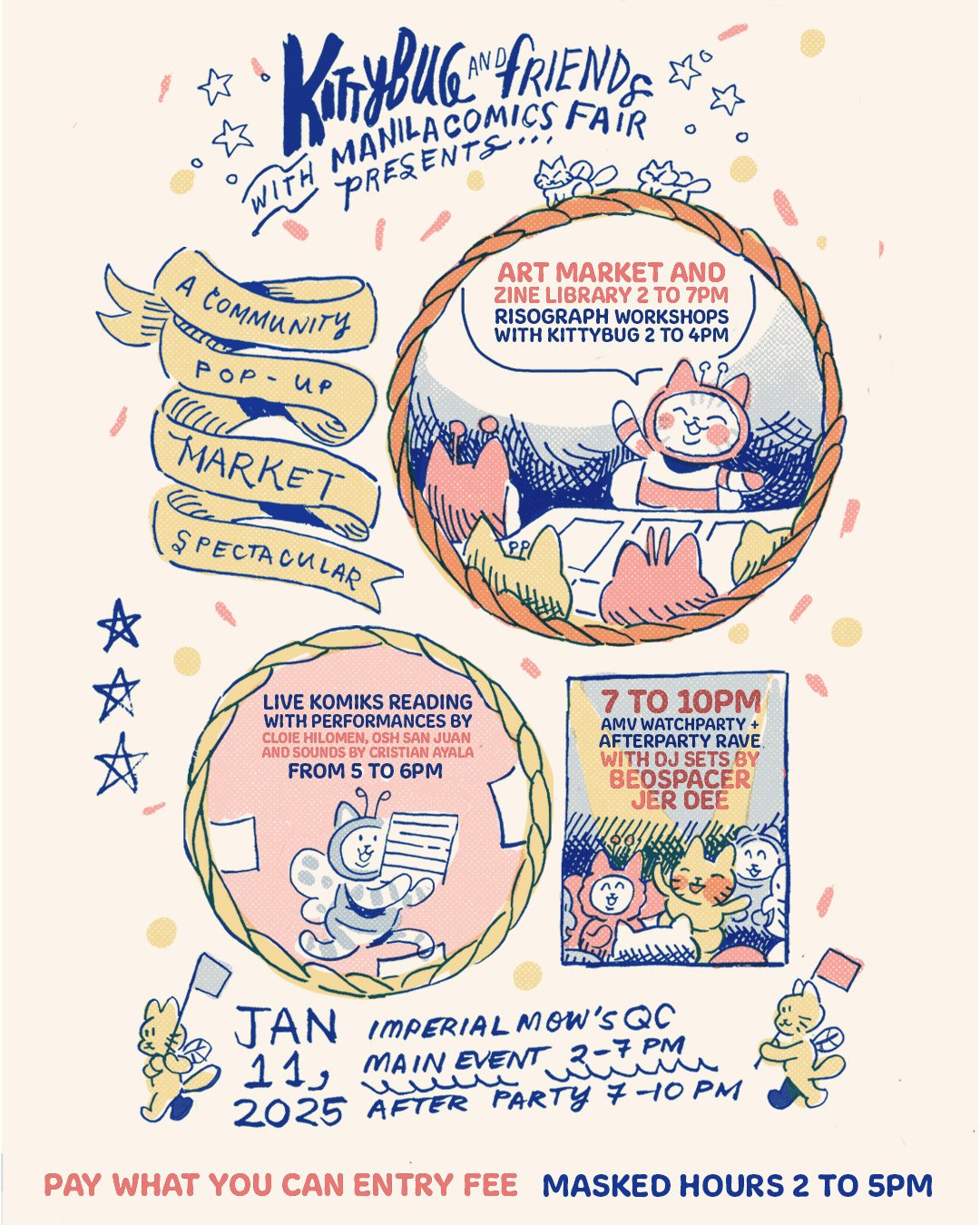

Congratulations again on Kittybug and Friends! As a queer creative myself, it’s one of the events where I felt truly welcome and free. Can you tell us about the reception of fairgoers? What did you learn about the public’s perception of zines and risograph prints through the event?
Kittybug Press: Thank you so much! We are moved by comments such as this, as we’ve also received positive feedback from attendees, volunteers, and exhibitors. It was amazing to see that there was a real appreciation for risograph printing and that we could introduce it to more people. We learned that creatives are more than eager to expand their practice, try something new, and seek connection when given the opportunity to do so.
Our community has been extremely supportive, and we can say that there was no shortage of inspiration from every creative involved in this event. Attendees enjoyed the variety of ways in which these talents were showcased through our art market, zine library, and Kittybug mural. We were also happy to learn that participants were enthusiastic to learn more about risograph through our workshop and gallery wall.
There’s still a lot more to discover about riso and zines, and the resounding desire for more resources and similar events just goes to show how willing our creatives are to go the extra mile if provided access to varied methods of art creation.
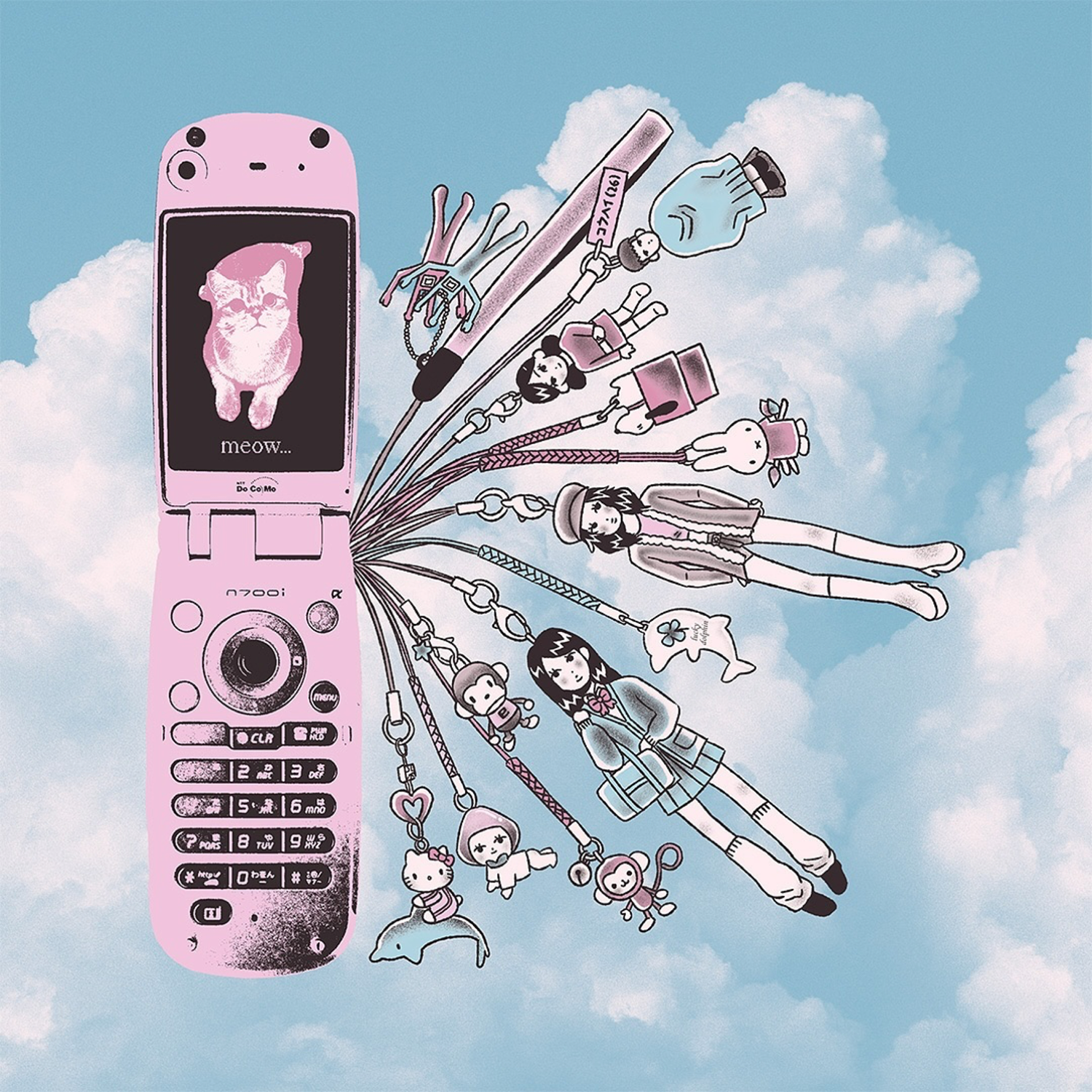

Above: Risograph print, art by cozybao, Below: Snaps from Kittybug and Friends’ risograph workshop and live comic reading
To end this interview, I’d like to hear about your experience as a one-year-old independent micropress. If any, how did all of your efforts thus far, including the event, deepen your appreciation for what you do and the community you are helping to cultivate?
Kittybug Press: We believe that our community is worth investing time, money, and effort into. We see ourselves as an active part of the community; it has existed for years but remains mostly unrecognized by the public because of limited visibility in the larger cultural sphere.
We acknowledge the struggles of Filipino female and queer creatives, so providing them with a program that gathers and celebrates them is a step we chose to take to honor their contributions, advocate for their rights, and, hopefully, make positive changes in the local art scene.
Artists inspire one another and Kittybug Press is grateful to have collaborated with Manila Comics Fair and Elephant Party to create a space that allows creatives to connect and share ideas! Kittybug and Friends was truly amazing to witness and we’re thankful for our co-organizers (Rob Cham, Nikki Bonuel, Cloie Hilomen, Diigii Daguna, Elle Shivera), our exhibitors, volunteers, and attendees. We all played a part in creating a happy, memorable, and enriching experience for everyone who attended.
The Filipino female and queer creative community is alive and thriving! We just need more efforts that will celebrate their work and existence.
Let’s join hands in carving out these spaces. •
